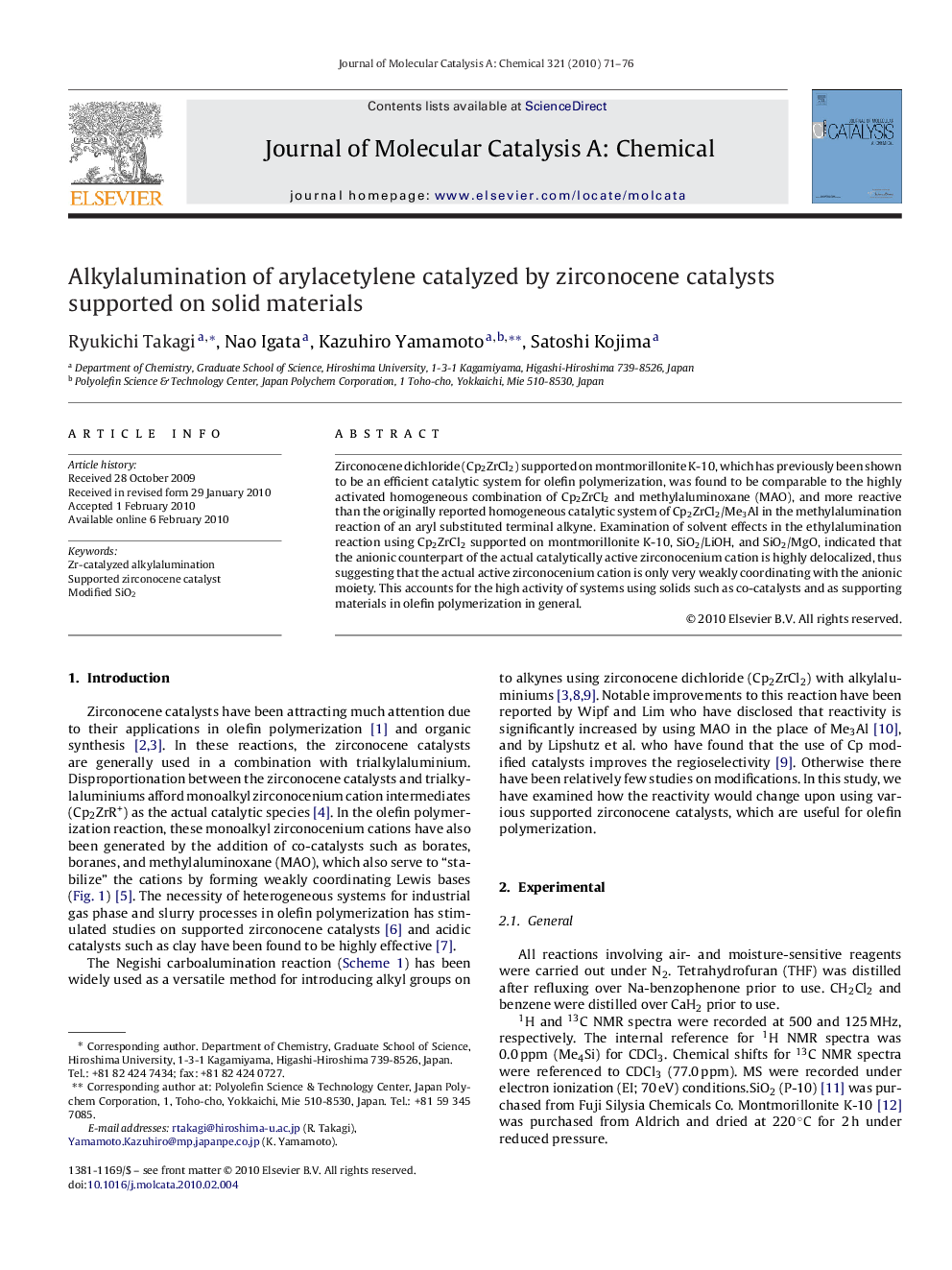| Article ID | Journal | Published Year | Pages | File Type |
|---|---|---|---|---|
| 66789 | Journal of Molecular Catalysis A: Chemical | 2010 | 6 Pages |
Zirconocene dichloride (Cp2ZrCl2) supported on montmorillonite K-10, which has previously been shown to be an efficient catalytic system for olefin polymerization, was found to be comparable to the highly activated homogeneous combination of Cp2ZrCl2 and methylaluminoxane (MAO), and more reactive than the originally reported homogeneous catalytic system of Cp2ZrCl2/Me3Al in the methylalumination reaction of an aryl substituted terminal alkyne. Examination of solvent effects in the ethylalumination reaction using Cp2ZrCl2 supported on montmorillonite K-10, SiO2/LiOH, and SiO2/MgO, indicated that the anionic counterpart of the actual catalytically active zirconocenium cation is highly delocalized, thus suggesting that the actual active zirconocenium cation is only very weakly coordinating with the anionic moiety. This accounts for the high activity of systems using solids such as co-catalysts and as supporting materials in olefin polymerization in general.
Graphical abstractThe effect of using solid supporting materials in the Zr-catalyzed alkylalumination reaction was examined. The heterogeneous system was found to equally active as the homogeneous Cp2ZrCl2/MAO system for methylalumination. Solvent effects in the ethylalumination reaction suggested that the high activity of the heterogenous systems was attributable to the delocalization of negative charge of the supporting material.Figure optionsDownload full-size imageDownload high-quality image (47 K)Download as PowerPoint slide
